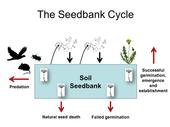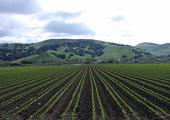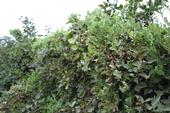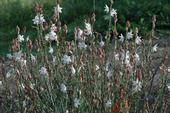- Author: Lynn M. Sosnoskie

When we think about weed control in crop production, we often think about 'short-term' result, i.e. weed control after 30 days, weed control after 60 days, weed control at harvest, etc. But weeds and weed control efforts in one crop can significantly influence the density and composition of weeds in following years. The carryover between commodities and seasons is accomplished via the weed seedbank, which serves, in my opinion, as the memory of crop production practices. Weed control successes and failures are reflected by changes that occur in this genetic reservoir. In good years, weeds are successfully controlled and few to no seeds enter the seedbank; in bad years, when weeds escape management strategies, rogue plants...
- Re-posted by: Gale Perez

From the UC Davis News Service • January 21, 2015
Led by Professor David Slaughter of the UC Davis Department of Biological and Agricultural Engineering, the project recently received a $2.7 million grant from the U.S. Department of Agriculture...
- Author: Mark Bolda
- Author: Steven Fennimore
- Author: Patrick Kingston
- Posted by: Gale Perez

From the UC Strawberries and Caneberries blog :: Sept. 11, 2013
Field bindweed, Convolvulus arvensis, also known locally as morning glory, is a persistent weed pest in blackberries grown on the Central Coast of the California. Much of this stems from the long period of time between plant establishment and final removal of the crop some five to six years later.
While cultivation of the aisles between the hedgerows is successful in keeping the field clear of most weeds, field bindweed is another matter. Not only does field bindweed establish very deep root systems which frustrate control by cultivation, but...
- Reposted by: Gale Perez
- Author: Carl E. Bell

Onionweed (Asphodelus fistulosus) is an attractive but very difficult to control weed that is relatively common along highways, some irrigation right of ways and other areas in Southern California. It likely came to our area as an ornamental plant, maybe as part of a seed mix or used (I was told) in reclamation projects in the north county area of San Diego. Once you learn to recognize it, it is easy to spot in spring and summer, especially along interstate 5 from La Jolla and on north at least as far as San Luis Obispo County. Photo 2 is from a restoration site in San Diego...
- Author: Chris McDonald
With apologies to Deborah Rabinowitz. (Seven Forms of Rarity, 1981)
There are many different ways of being a pest. Some of the easiest ways are to use large bulldozers next to an office building, or have a computer virus send spam to every person on earth with an email address. How classifying pests relates to weed management is relatively straightforward.
What I specifically mean is how many different types of weeds are there? Not the individual species but the general ways of being a weed. There are surprisingly only a few ways a weed can be a pest. There are infinite details (similar to being infinitely pestered) to add to the general framework that in sum makes every species unique. The...


